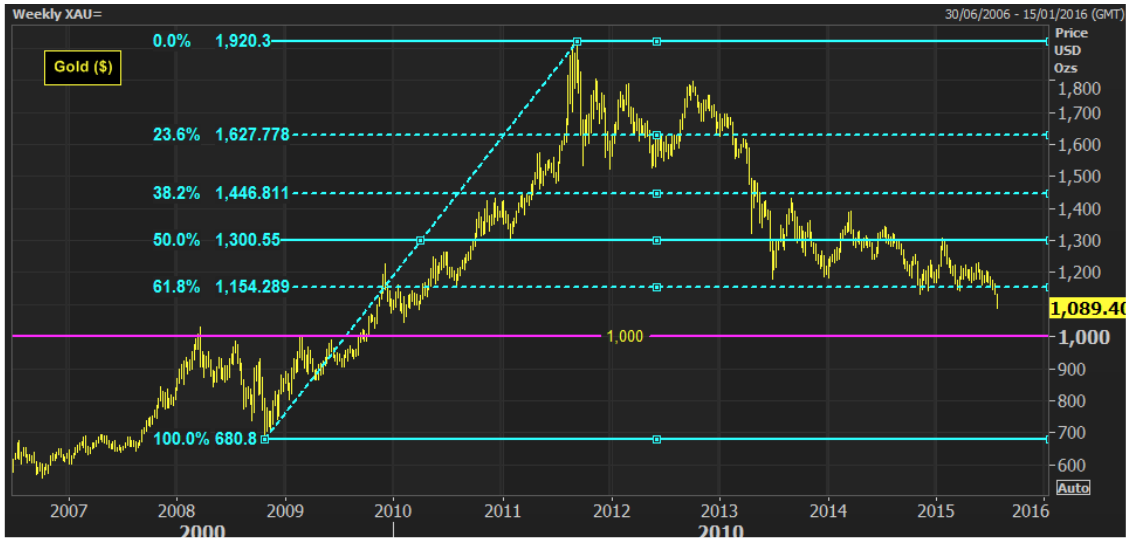Since 2008 the world’s major central banks have embarked upon a series of mammoth Liquidity creation drives, the bi-product of which should have been enough to generate a significant increase in inflation. Ideal conditions for a huge gold run. As a finite and tangible asset, gold is seen as a classic inflation hedge.
However, in the years since inflation it has done the opposite. Countering the accepted economic expectations of the impact of quantitative easing, global economies have been fighting against deflation that continues to be the bane of monetary normalization for policy makers. Gold prices have been under pressure and falling consistently (barring the odd rally here or there) since peaking out at $1,920 on the 6th of September, 2011.
All along, although the gold bugs may not have had the inflation argument to hang on to, they still had their joker to play. Their counter has always been: “It does not matter because China is buying gold by the bucket load." Well, the gold bugs recently got some bad news. They were wrong about China, and considerably so.
The expectation has always been that China was buying gold to physically “back” its currency, the yuan; whilst also using their stockpiles of gold for the purpose of challenging or even overtaking the US dollar as the world’s reserve currency.
Recent data from the World Gold Council suggests both of these factors are just not happening. In the years since April 2009, China’s gold holdings have increased by 57%. This may sound like a big increase, with its holdings having been hiked from 1054 tonnes to 1658 tonnes. However, this is actually a huge disappointment for the gold bugs. The US stands head and shoulders above the rest of the world in terms of gold holdings at 8133 tonnes, whilst Germany lies second at 3383 tonnes. Even Italy and France hold more gold than China. The argument for the gold bulls suggests that China should have at least doubled or even tripled its holdings in the past 6 years, but this has just not been the case.
Furthermore, whilst holdings of gold have increased by 57%, the People’s Bank of China has increased its foreign exchange reserves (of dollars and euros) by 84% during that time. This means that it has actually preferred to focus more on fiat money holdings than gold as an asset. Its holdings of gold as a percentage of Forex reserves has actually decreased from 1.8% to 1.7%. Also taking into consideration that the PBOC's money supply of M1 and M2 increased by 120% during that time, China certainly does not seem to be looking to “back” the yuan with gold.
This is all a massive blow for the argument of the gold bugs. The gold price fell by as much as $45 on the first trading day after the announcement of China’s gold holdings. There were massive sellers in the market, offloading around 57 tonnes of gold. Not only that, huge technical support levels were breached in the process. A multi-year low has now been reached with gold trading at its lowest since March 2010.
The old crucial support at $1,131 (the old November 2014 low) now becomes a key overhead resistance level for any rallies. Furthermore, technical analysis of the Fibonacci retracement levels of the big 2008/2011 bull run from $681 to $1,920 suggests that a move all the way back to $681 could even be a possibility. For me, this would be an extreme scenario move and I am not calling that as a level, but certainly the next key low at $1,043 and the subsequent support around $1,000 could easily be seen in the coming months.
Gold bugs beware, the sell-off may not be done yet!

Long Term Gold Chart



















